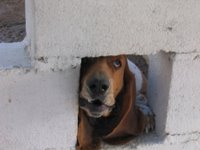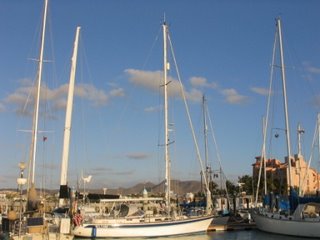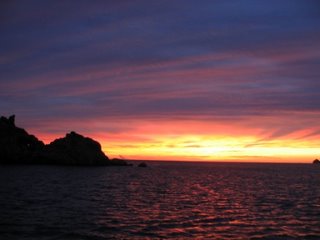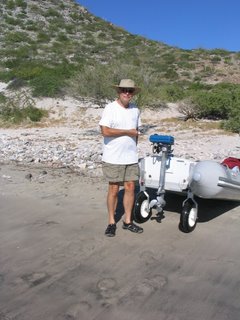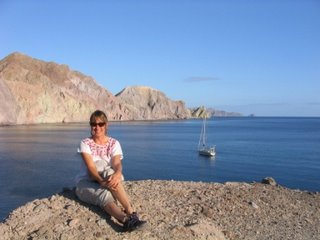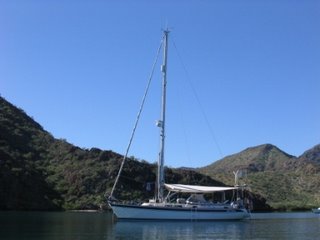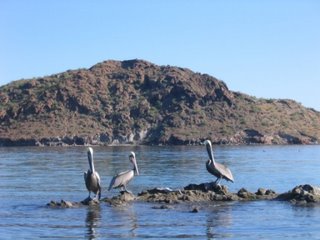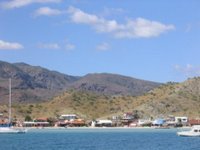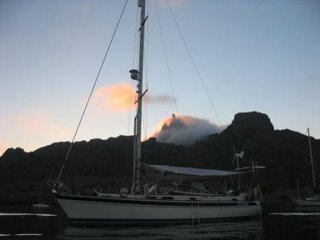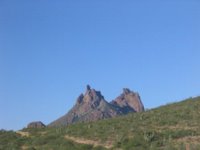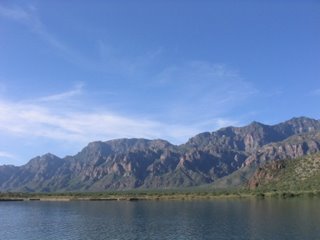
Puerto Escondido - The norther lasted from Wed. evening 11/29 through Friday afternoon 12/1. The sky clouded over, the wind howled, the whitecaps slapped the hull, and the boat rocked and pivoted around its anchor. It was like being inside a washing machine. But we knew it could be worse: we'd heard accounts from those who'd had to reset their anchor overnight in other anchorages. After two days, boredom was almost palpable. We left the safety of the boat and tried the one and only restaurant in Puerto Escondido. It was good and we met two gents: one Canadian, one British for some interesting and different dinner conversation.
Then, Saturday, the wind let up and we hiked the boulder-choked canyon immediately opposite the entrance to P. Escondido on Hwy. 1, in the Giganta range. Steinbeck has an account of hiking a similar canyon here in "The Log from the Sea of Cortez." We hiked about an hour up until we could go no further. It was mainly dry but had a few pools of rainwater.
Since we were back at Hwy. 1 by noon, we took the bus into town (Loreto) again, planning on returning by the 6:00 bus. At 5:30 we were told the 6:00 would not be running, so we took a cab back ($30). The wind had picked up again and we spent Sat. night and all day Sunday in the grip of the norther, round 2, although on Sunday we did venture ashore for Sunday brunch held by the local long-time Norte American "residents." It was good to talk to some others about their experiences. We'd had enough on Monday and left for Agua Verde, about 25 miles south. We sailed in 10-20 knot winds, but had to motor also since the sea was so sloppy and had pretty big swells that rolled el barco. Ah, yachting!
**It HappensI picked up a Montezuma-type bug (again) in Loreto. We're wondering why it happened to me when Steve is the one with the sensitive stomach. We managed to slice the satellite radio cable, but we made it to Los Gatos bay on Tues. in 10-20 knot wind with 3-6 foot swells. Maybe someone will have an extra cable in La Paz. (Hey, I can hope.) A few other misadventures have happened that I'll just refer to as "the Sammy incident" and "the dinghy incident," but we and the boat are OK.
A group of sea kayakers is camped on the beach here in Los Gatos. We're hoping to make it to La Paz (The Peace) by Saturday, 12/10/06. The wind is supposed to die before then, but the swells will still be rolling, and that's the uncomfortable part.

